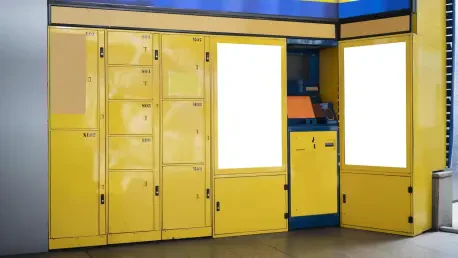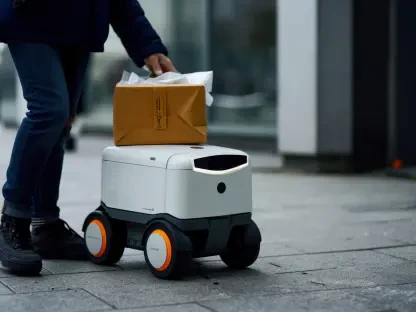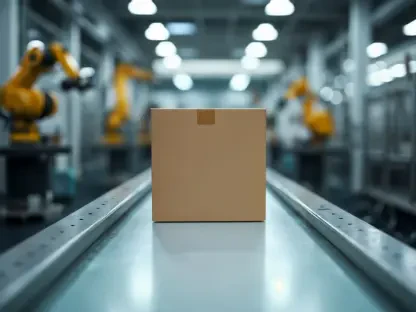In this engaging dialogue, Rohit Laila, a seasoned expert in logistics with a keen interest in technology’s role in supply chain improvements, shares his insights on the fascinating developments at bpost, particularly the remarkable growth in parcel deliveries to Parcel Lockers. Rohit offers a detailed perspective on how these changes reflect broader trends in customer satisfaction and strategic placement across urban landscapes.
What factors have contributed to the 44% increase in parcel deliveries to lockers last year?
The rise in parcel deliveries to Parcel Lockers can be attributed to several key factors. Firstly, there’s the convenience factor; they offer people the flexibility to collect parcels at their own convenience without the worry of opening hours or waiting in lines. Additionally, the strategic placement of these lockers in accessible locations increases their accessibility. Technology also plays a part; as digital natives become more accustomed to using digital platforms for their daily needs, the adoption of Parcel Lockers has naturally increased.
How has the expansion of Parcel Lockers impacted customer satisfaction and what does the NPS score reflect?
The expansion has had a significant positive impact on customer satisfaction, which is evident from their high Net Promoter Score. This score reflects how likely customers are to recommend the service to others, indicating high levels of satisfaction. Parcel Lockers offer hassle-free, round-the-clock access to parcels, which aligns perfectly with modern consumers’ on-the-go lifestyles. This level of convenience generally translates to happier customers and thus, their willingness to promote the service.
Could you elaborate on the importance of location proximity in influencing the popularity of Parcel Lockers?
Location proximity is absolutely critical to the success of Parcel Lockers. The closer these lockers are to where people live, work, or travel regularly, the more likely they are to use them. If a locker is conveniently placed, it becomes an integrated part of a customer’s daily routine, similar to a stop at a grocery store or a gym. This accessibility removes barriers to use and significantly increases the likelihood of adoption by nearby residents.
How is bpost collaborating with cities and municipalities to strategically place Parcel Lockers in convenient locations?
bpost has taken an insightful approach by working closely with cities and municipalities to determine the best placements for these lockers. By installing them in public areas, near popular supermarkets, and local hotspots, they ensure that lockers are positioned where foot traffic is high and accessibility is maximized. This careful planning requires strong collaboration with local authorities to ensure both visibility and convenience for potential users.
What significance does the 1500th Parcel Locker installed in Schaerbeek hold for bpost’s expansion strategy?
The installation of the 1500th Parcel Locker is a milestone that signifies both growth and geographical reach. Its location in Schaerbeek, a key area in Brussels, highlights bpost’s aim to penetrate urban centers where demand for such services is high due to denser populations. It also serves as a testament to bpost’s commitment to increasing their locker network exponentially, positioning them as a leader in logistics innovation.
What is the capacity increase implied by the doubling of Parcel Locker numbers, and how does it affect consumers?
The doubling of Parcel Locker numbers essentially triples the overall capacity, which means bpost can accommodate a larger volume of parcels. This increase benefits consumers by reducing congestion and ensuring that parcels are available for pick-up at their expected times. A higher number of lockers with more compartments also means greater availability and less likelihood of lockers being full when needed.
How does the expansion of Parcel Lockers align with bpost’s overall strategy for increasing the number of pick-up points?
Expanding Parcel Lockers fits seamlessly into bpost’s broader strategy of diversifying and increasing pick-up points. This expansion is about more than just capacity; it’s about offering various options that cater to different customer needs. While the lockers provide 24/7 access, other pick-up solutions like Post Points offer personal interaction and services, catering to diverse consumer preferences.
How do Post Offices, Post Points, and Parcel Points contribute to bpost’s strategy, and how do they differ from Parcel Lockers in terms of service?
Each type of pick-up point delivers unique benefits. Post Offices offer full postal services including human interaction and assistance that lockers can’t provide. Post Points expand service availability by partnering with local retailers, which can bring postal services closer to home. Parcel Points make it easy to collect parcels while running everyday errands. In contrast, Parcel Lockers provide the ultimate in convenience and flexibility, focusing on self-service.
Can you discuss the role of the 3,600 pick-up points in enhancing bpost’s network and providing convenience to customers?
The network of 3,600 pick-up points forms the backbone of bpost’s service offerings. This extensive network allows for greater geographic reach and accessibility, providing customers with numerous choices for collecting parcels. It improves the overall customer experience by integrating postal services into daily routines and offering options that suit different lifestyles and needs.
How does bpost maintain a balance between expanding Parcel Lockers and investing in other pick-up options like Post Offices and Post Points?
Maintaining this balance requires strategic planning and an understanding of customer preferences and behavior. While expanding the locker network, bpost continues to invest in traditional points of contact like Post Offices and Post Points, which offer additional services and human interaction. By doing so, they ensure comprehensive coverage and maintain customer engagement across different touchpoints.
What is your forecast for the future of parcel delivery and pick-up services?
Looking ahead, I anticipate a continued rise in demand for Parcel Lockers as people seek increased flexibility and convenience. The trend is likely to move towards even more automation and integration with smart technologies, like apps for real-time tracking and access. Additionally, there could be potential growth in environmentally friendly solutions, optimizing delivery routes, and minimizing carbon footprints. The landscape will likely become more competitive, with companies continuously innovating to meet the evolving expectations of consumers.









